In Photos: The Science and Silliness of the 2017 Ig Nobels
Underground science
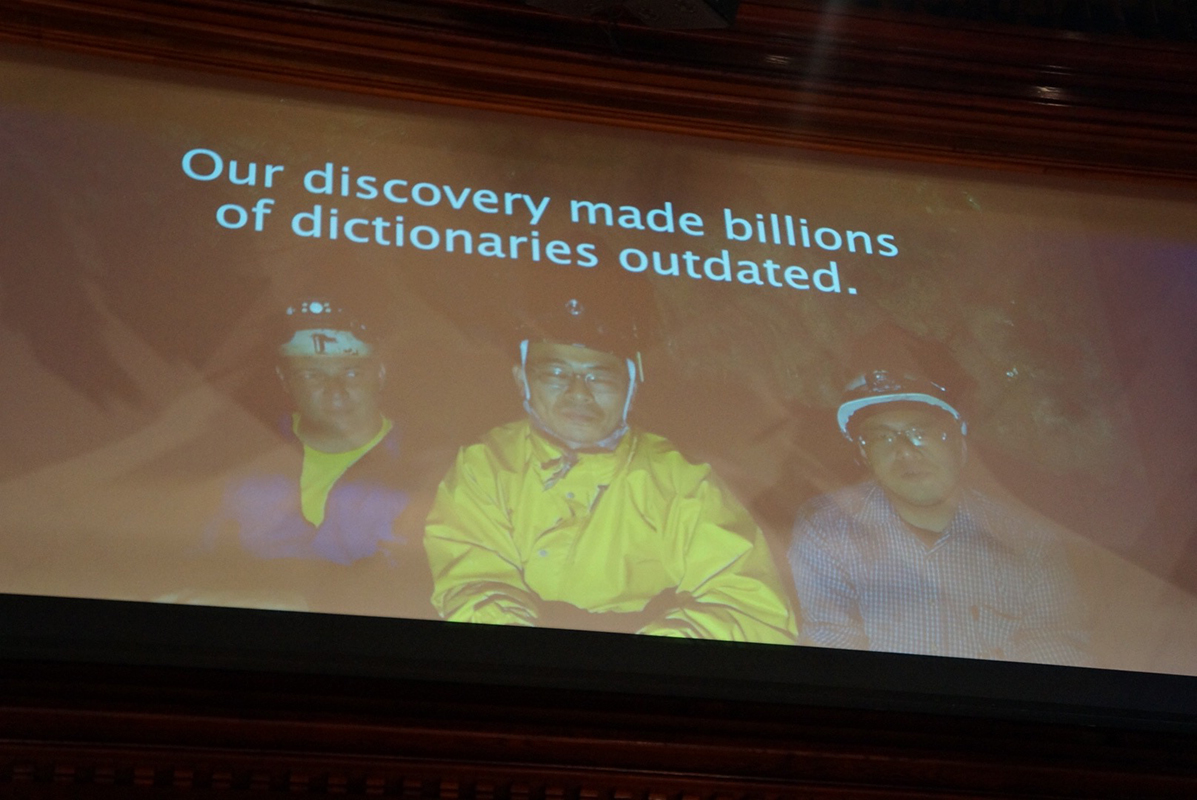
The winners of the Ig Nobel Biology Prize — for discovering a so-called "sex-reversed" cave insect with a female penis and a male vagina — were unable to attend, as they were all in a cave conducting field work. In an acceptance video screened at the ceremony, they explained that by overturning traditional definitions of "penis" and "vagina," their study had rendered billions of dictionaries outdated.
Now ear this

The Anatomy Prize was awarded to Dr. James Heathcote for a study inspired by an observation that old men have unusually large ears; he investigated whether ears do, in fact, get bigger as people age. Heathcoate is illuminated by the silvery Jim Bredt, one of the Ig Nobels' "Human Spotlights."
24/7

Every year, the Ig Nobel ceremony includes "24/7" presentations by researchers, in which they describe their scientific work in two summaries: one that is no longer than 24 seconds, and one that is no more than seven words. Aleksandra Przegalinska, an artificial intelligence expert and an assistant professor at Kozminski University in Poland, briefly explained the topic of "Bots" by saying, "Robots that talk are perceived as stupid."
Are you certain?
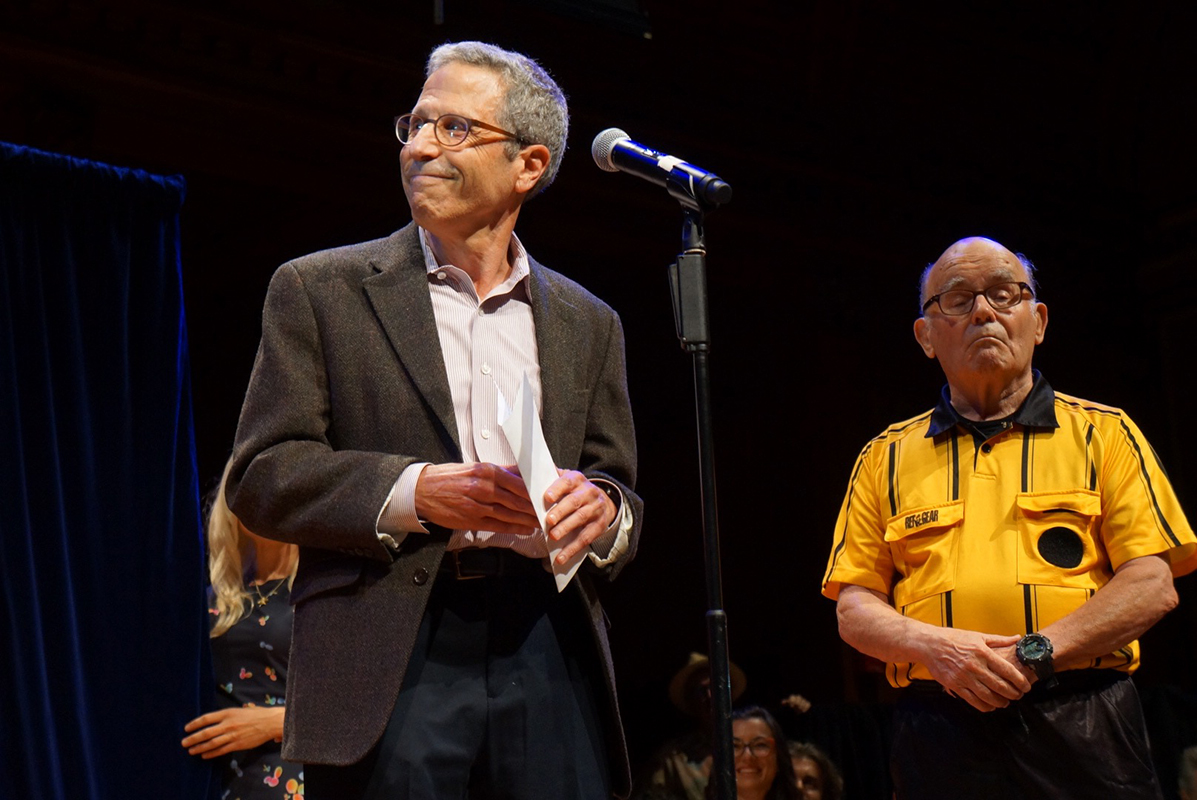
Nobel laureate Eric Maskin delivered a seven-word lecture on "Uncertainty" — the theme of the 2017 Ig Nobels — with the pithy "Uncertainty is the only sure thing…perhaps."
Highly caffeinated
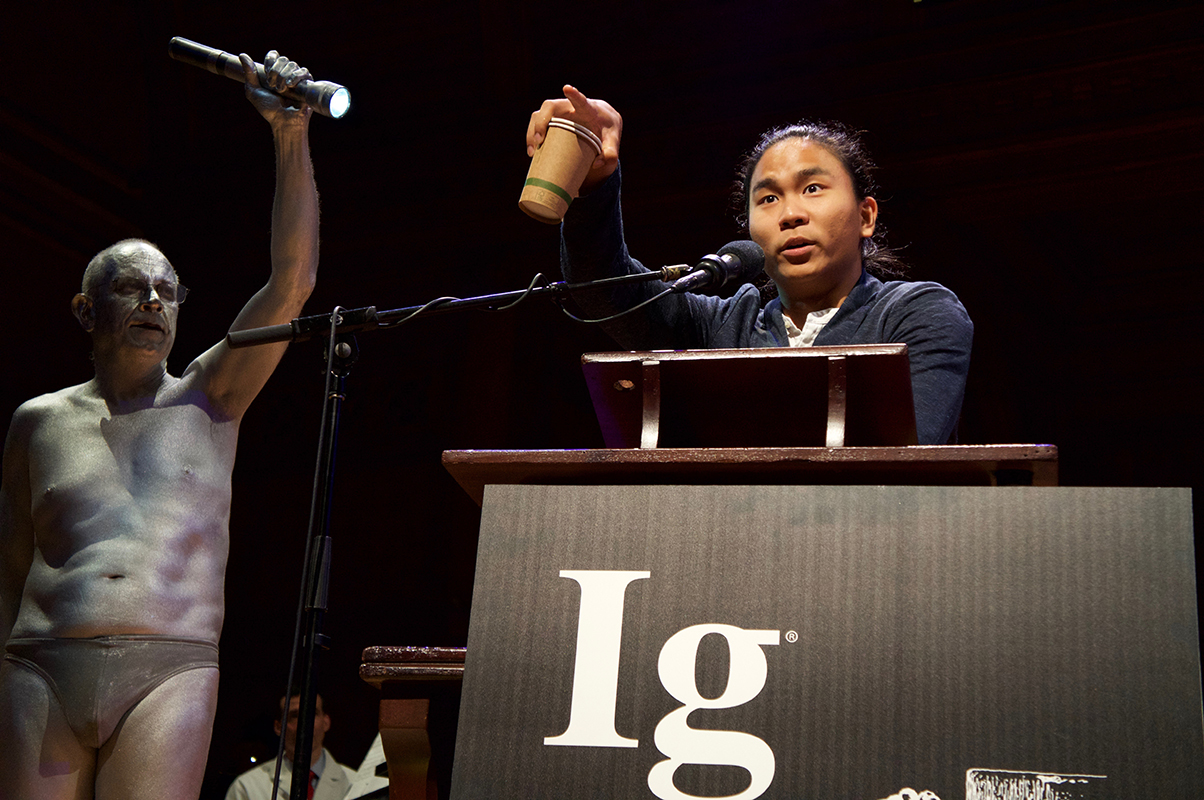
Jiwon "Jesse" Han, an undergraduate at the University of Virginia, wrote the study that won the Ig Nobel Fluid Dynamics Prize when he was still in high school in the Republic of Korea, exploring the dynamics of liquid sloshing by observing what happens to a cup of coffee when it is carried by someone who is walking backward.
In his acceptance speech, Han told the audience that when it comes to succeeding in science, "it's not about how old you are; it's not about how smart you are; it's about how much coffee you drink."
Long in the tooth

The Ig Nobel Nutrition Prize was awarded to a team that found the first evidence of vampire bats feeding on human blood. Though they were unable to attend the ceremony, they demonstrated an affinity for their study subjects in a recorded acceptance speech.
Get the world’s most fascinating discoveries delivered straight to your inbox.
A moment of science
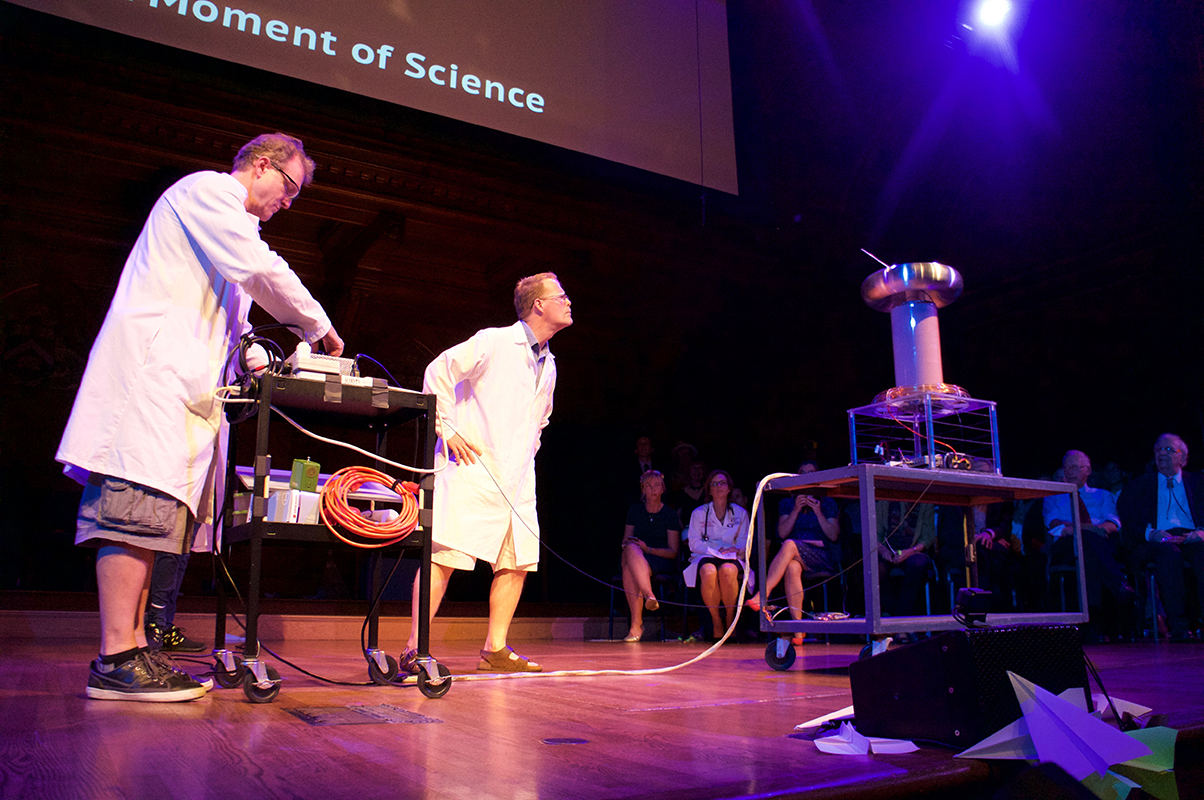
At the Ig Nobel Prize Ceremony, "Moments of Science" offered real-time experiments performed onstage, but with no introduction or explanation, leaving many in the audience scratching their heads as to what exactly the experiment was demonstrating. In this particular instance, even the "scientists" appeared perplexed by the outcome, which apparently did not go as they expected.
Who's who?
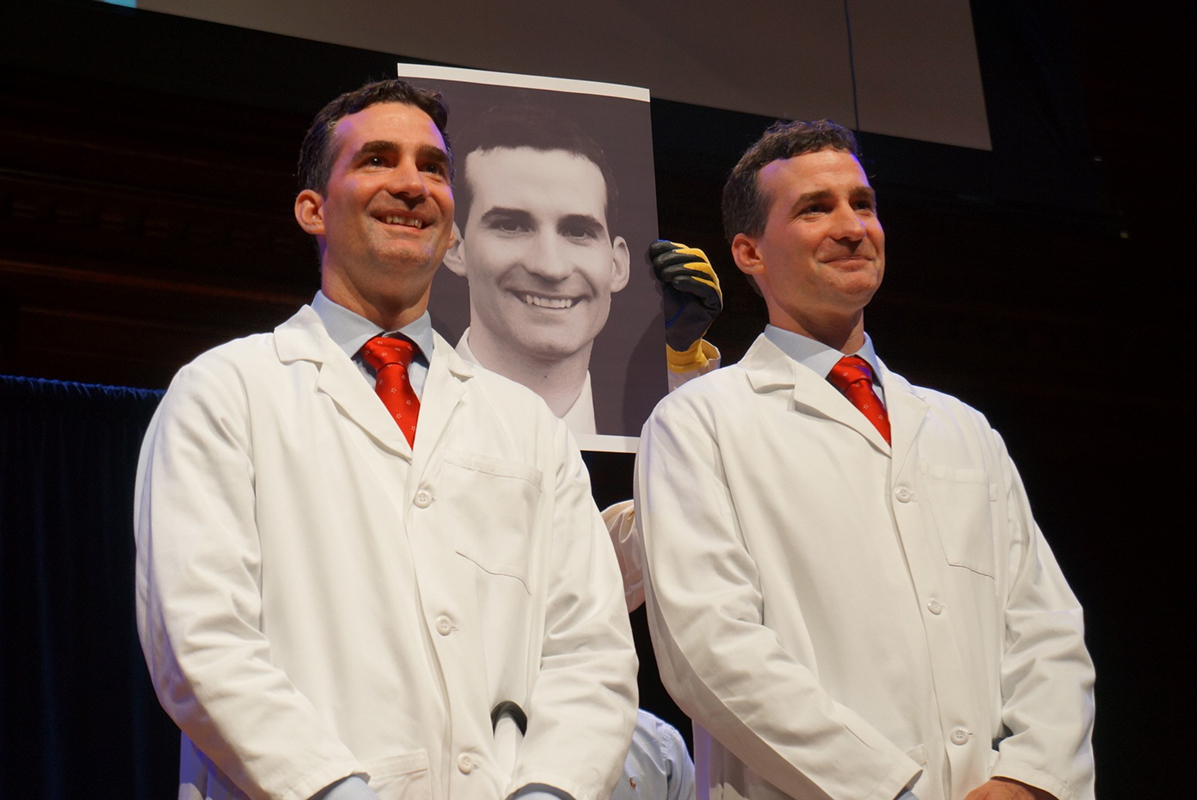
A pair of identical twins obligingly demonstrated the premise of the study that won the Ig Nobel Cognition Prize — whether identical twins could tell themselves apart visually.
The sound of music
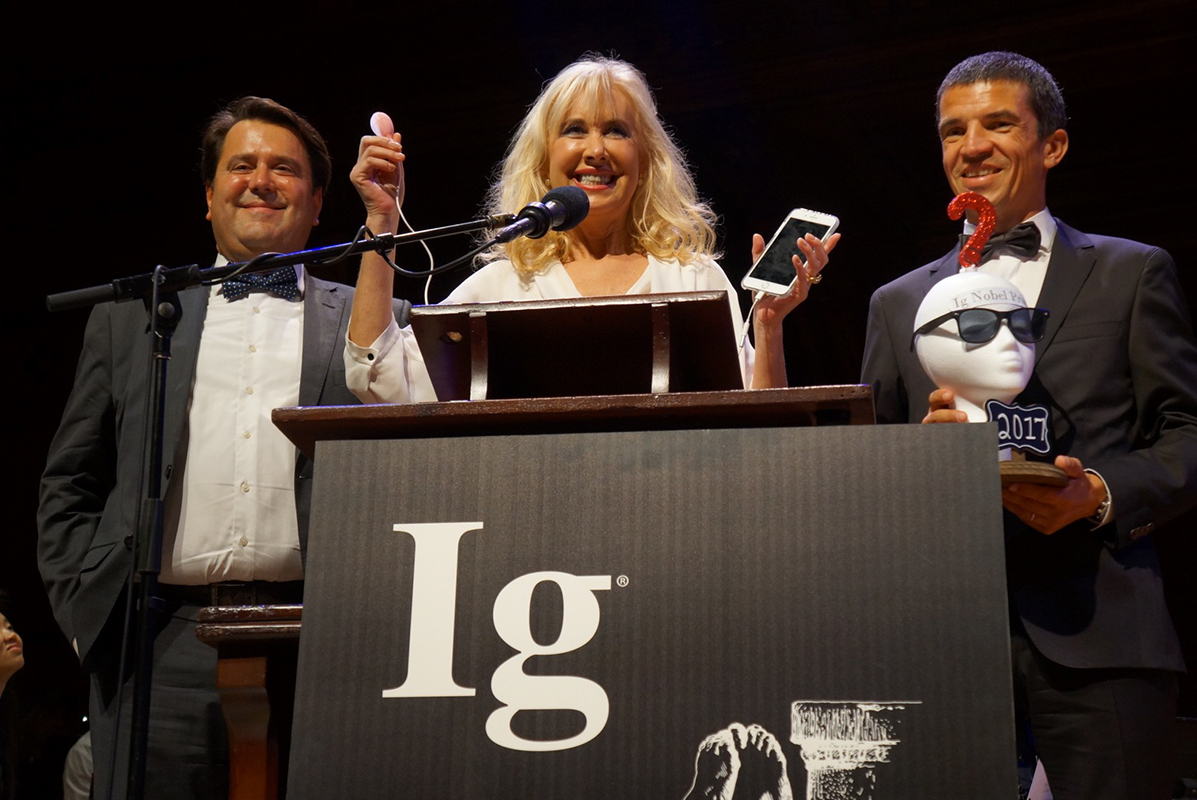
Developing fetuses have an ear for music — especially if it's played through a speaker inserted into their mother's vagina, according to the study that took home the Ig Nobel Obstetrics Prize. A team of researchers demonstrated that a fetus responds more strongly to music delivered to the womb by way of the vagina, rather than through the abdominal wall. To that end, they developed and designed a silicon vaginal speaker known as the Babypod, which can be used from week 16 of a pregnancy, according to the product website.
Didgeri-don’t!

An experiment that was on the brink of bringing together a didgeridoo and a "pregnant" woman, perhaps in the interest of testing a more analog version of the Babypod, was swiftly curtailed by the "NSFW Indicator Monitor," William J. Maloney.

Mindy Weisberger is a science journalist and author of "Rise of the Zombie Bugs: The Surprising Science of Parasitic Mind-Control" (Hopkins Press). She formerly edited for Scholastic and was a channel editor and senior writer for Live Science. She has reported on general science, covering climate change, paleontology, biology and space. Mindy studied film at Columbia University; prior to LS, she produced, wrote and directed media for the American Museum of Natural History in NYC. Her videos about dinosaurs, astrophysics, biodiversity and evolution appear in museums and science centers worldwide, earning awards such as the CINE Golden Eagle and the Communicator Award of Excellence. Her writing has also appeared in Scientific American, The Washington Post, How It Works Magazine and CNN.


